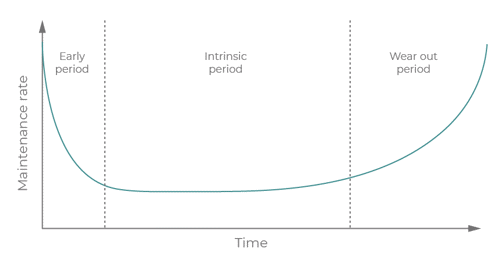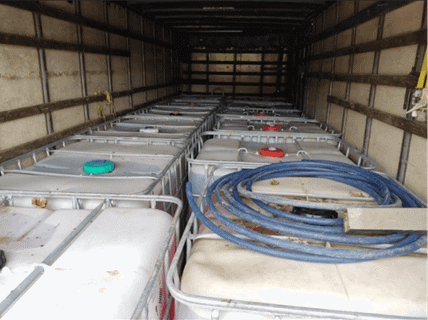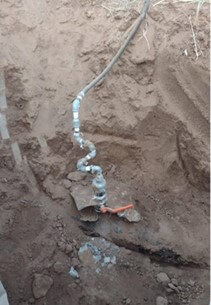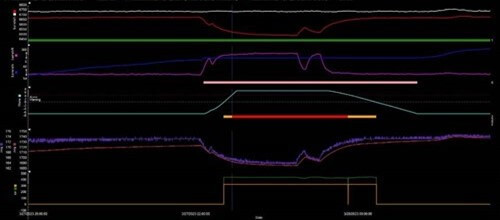Pipeline theft remains a global problem
Every region is impacted in different ways due to the multidimensional nature of pipeline theft. For this reason, approaches to theft detection should acknowledge that there is no one size fits all solution and should take a multilayered approach to pipeline theft that includes legal, social, economic and technological factors.
Sales and Senior Research Engineer Harry Smith sheds light on the pipeline theft challenges facing Latin America in this article and how Atmos International (Atmos), an organization that has detected more than 1,000 pipeline thefts globally, is directly responsible for ongoing support to the region. The article discusses the following pipeline theft related challenges facing Latin America:
The following three case studies are covered to evidence our support to the region:
Pipeline theft related challenges facing Latin America
The region’s physical geography
Latin America is known as a continent of extremes. Its physical geography is highly variable and can be separated into three key physical regions: coastal plains, river basins and highlands. It’s not uncommon for a pipeline network in Latin America to pass through areas with limited to no power or communications either due to the accessibility issues posed by the region. Pipelines are commonly above ground too.
For criminals planning a pipeline theft operation, these exposed and unmonitored areas along a pipeline create a window of opportunity with a lower risk of being spotted.
Socioeconomic factors like poverty and inequality consistently remain above pre-pandemic levels in Latin America, with 2022 reports indicating that approximately 32.1% of the region live in poverty conditions, 13.1% of which are in extreme poverty.1 Inequality is also a deeply entrenched challenge in the region, with Latin America containing 16 of the 30 most unequal countries in the world (based on income distribution).2
For people experiencing poverty and inequality, a common driver of pipeline theft is basic human needs, such as obtaining fuel for heating and cooking. This motivation for pipeline theft typically triggers the “slash and grab” approach, which is commonly characterized by poor installations of tapping points, angle grinding the pipeline, larger diameter taps, hitting the pipeline once and not returning and a high risk of pipeline rupture.
It’s worth noting that nearly 45% of youths In Latin America are in poverty too, a demographic which can typically be easily influenced into falling into crime despite the introduction of social programs and other initiatives.
Worsened by already existing factors like poverty and inequality, organized crime has consistently been a challenge in Latin America since as early as the 1980s, stemming from political instability and government corruption.3
Now, organized crime has reached a level of maturity where Mexican drug cartels can earn as much as 90,000 US dollars in a few minutes from illegal pipeline tapping.4 Government corruption, a cause of inequality in Latin America and a factor in the rise of organized crime, is ironically now leveraged by organized crime groups to achieve more pipeline theft too, with 57% of all oil and gas fraud in Mexico relating to corruption schemes.
From the bribery of government officials to the strategic use of threats and violence to obtain information from pipeline operators which can inform oil product theft plans,5 pipeline theft committed by organized crime groups is a sophisticated operation, in part due to the anti-social nature of their operations, but also due to the resources they have available.
In contrast with the “slash and grab” technique typically deployed by people experiencing poverty, organized crime groups have more sophisticated technology available and are commonly affiliated with an approach to theft called “try and remain hidden”.
The “try and remain hidden” approach can involve the slow opening and closing of valves for small pressure changes, using longer hoses, stealing smaller amounts of fuel over longer periods, stealing from multiple locations along the pipeline, leaving tapping points untouched for long periods, the occasional use of double tapping points and carrying out theft at night in some cases.
This approach to pipeline theft is common in organized crime groups and can be large and involve corrupt workers, officials and even military personnel who are bribed or threatened to turn a blind eye or have an active involvement.
Regardless of the theft technique used, both “slash and grab” and “try and remain hidden” are dangerous as the likelihood of causing a leak or even a rupture is still very high due to the weakened pipeline integrity and preempted wear out period of the network (see Figure 1).

Figure 1: A visualization of the bathtub curve, as used to define the reliability of a product
Due to the fall in profits from other illegal activities in recent years, pipeline theft has been on the rise in Latin America since the COVID-19 pandemic. The National Oil Company estimated around 2,500 barrels per day of oil and other products were being stolen at the peak.6
This is in part due to the fact that criminal profits from other illegal activities were falling. Also due to government offences that have helped overcome kingpins in recent years, the cartels are also keen for new income sources.
While a range of challenges impact Latin America, Atmos International’s leak detection and theft detection solutions continue to support the region.
Case study 1: Atmos Wave in Costa Rica
On a pipeline in Costa Rica, Atmos Wave recently found an illegal tapping point using its high accuracy in location estimate. Authorities at the theft site were able to intercept 12 containers full of stolen product before the thieves could flee with it.
When a leak or theft occurs in a pipeline, a negative pressure wave propagates in both directions along the pipeline. Atmos Wave uses fast response pressure meters and filters the pressure signals to find those with the frequency and magnitude of a leak or theft.
Assessing the time each pressure signal reaches each pressure meter, Atmos Wave can determine the location of a theft with extreme accuracy, which is what enabled the Costa Rican pipeline company to intercept the stolen product.

Figure 2: 12 containers of stolen product discovered at the theft site
Case study 2: Atmos Theft Net in Mexico
Multiple tapping points have been located in Mexico recently using the human element of pipeline theft detection. Standard sensors can detect leaks as small as 0.5% of the nominal flow rate at best, meaning they would likely miss these theft events because pipeline theft typically occurs at less than 0.3% of the nominal flow rate.
Taking a multimethod approach that includes hardware, software and the human element in Atmos Theft Net, pipeline companies in Mexico have been able to detect multiple tapping points this year.

Figure 3: An illegal tapping point found in Mexico
Case study 3: Atmos Pipe in Colombia
Over a period of a few days, a customer in Colombia experienced multiple pipeline thefts, but Atmos Pipe enabled pipeline operators to locate the illegal tapping point to within meters of the leak location.

Figure 4: The theft reported by Atmos Pipe
Atmos Pipe has been at the forefront of leak detection optimization since 1995 when it was released as the first statistical volume balance system. Using the sequential probability ratio test and the Kullback-Leibler method, Atmos Pipe was able to detect the theft activity for this customer.
Learn more about our progress in the face of global pipeline challenges
With 54% of thieves using a variety of methods to avoid detection,6 it’s important to acknowledge that the issue of pipeline theft is multidimensional and affects each region in different ways. Thieves are becoming increasingly advanced, using sophisticated equipment and techniques to try and remain undetected, but with the right combination of hardware, software and experienced engineers analyzing the data offline, theft detection systems can evolve to become more advanced than the operation the thieves run.
(Article first published in Brazilian Portuguese for EPBR)
References
1 https://www.aljazeera.com/news/2022/11/24/latin-america-faces-prolonged-crisis-following-pandemic-un
2 https://www.mckinsey.com/mgi/our-research/what-could-a-new-era-mean-for-latin-america
3 https://www.crisisgroup.org/latin-america-caribbean/latin-america-wrestles-new-crime-wave
4 https://oilmanmagazine.com/article/oil-theft-a-frightening-international-perspective/
5 https://www.reuters.com/investigates/special-report/mexico-violence-oil/
